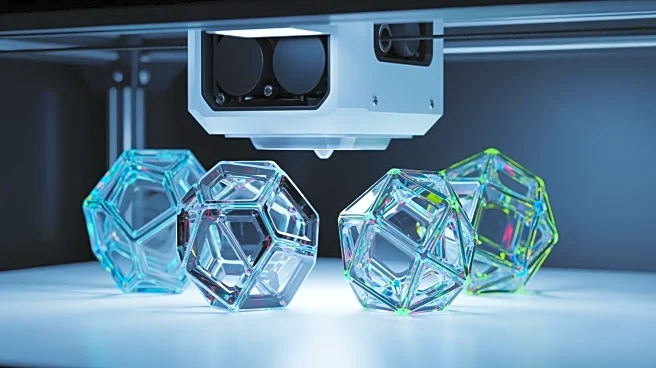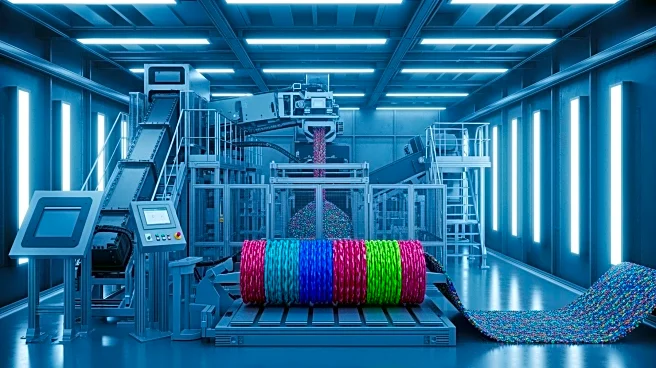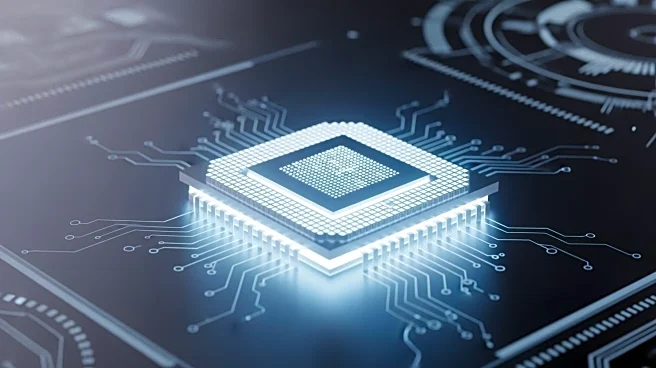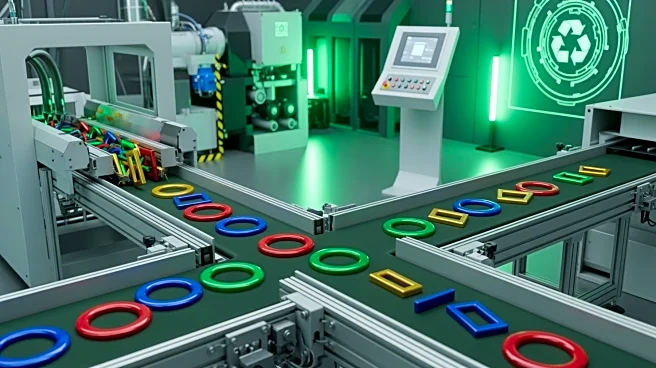What's Happening?
A recent study published in Nature highlights the development of 3D-printable photochromic materials capable of all-optical arithmetic and logic processing. These materials, based on spiropyran and diarylethene
derivatives, are shaped using digital light processing techniques. The study demonstrates how these materials can dynamically control transmitted light through the intensity and sequence of incoming signals, offering robust photoswitching cycles and long-term optically-textured information storage. The research explores the use of these compounds in 3D printed devices, opening new avenues for computing, information storage, and light propagation control.
Why It's Important?
The advancement of 3D printable photochromic materials represents a significant leap in optical processing technology. By integrating computing, information storage, and light control, these materials could revolutionize industries reliant on optical data processing, such as telecommunications and data storage. The ability to perform arithmetic operations using light rather than electronic signals could lead to faster and more energy-efficient computing systems. This development may also impact the design of future optical devices, potentially reducing costs and increasing the efficiency of data processing technologies.
What's Next?
The study suggests further exploration into the integration of multiple photochromic systems for parallel processing, which could enhance the capabilities of optical processors. Future research may focus on improving the stability and efficiency of these materials, as well as expanding their applications in various technological fields. The potential for these materials to be used in complex optical architectures could lead to new designs in computing and data storage devices, paving the way for innovative solutions in the tech industry.
Beyond the Headlines
The ethical and environmental implications of using 3D printable photochromic materials in optical processing are worth considering. The reduction in energy consumption compared to traditional electronic processors could contribute to more sustainable technology practices. Additionally, the use of organic materials in these devices may offer a more environmentally friendly alternative to conventional computing components, aligning with global efforts to reduce electronic waste.











